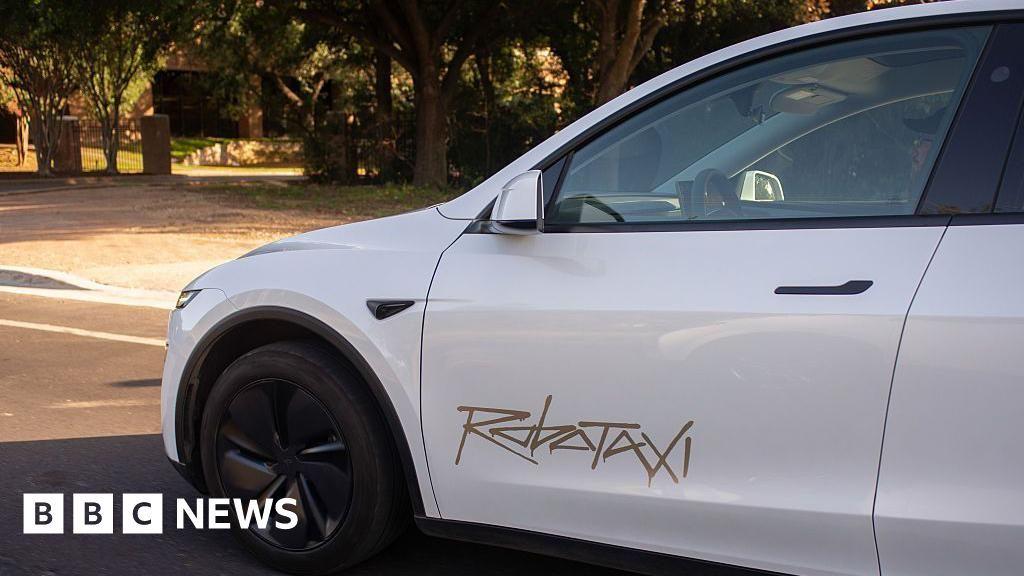Revolutionary Robot Chauffeur: Scientists Develop AI-Powered Driver for Regular Cars
2 Sources
2 Sources
[1]
Scientists unveil revolutionary robot capable of driving regular cars
This musculoskeletal humanoid robot, named Musashi, is crafted to mimic the human body and drive a car just like any human would. The concept of driverless cars has captivated the world, presenting a complex challenge that advanced technology and innovative minds are steadily overcoming. These vehicles are designed to analyse their surroundings, thereby enabling them to operate without human intervention. Building on this innovation, scientists at the University of Tokyo, led by Dr Kento Kawaharazuka, have taken a remarkable step forward by creating a robot capable of driving a regular car. X This musculoskeletal humanoid robot, named Musashi, is crafted to mimic the human body and drive a car just like any human would. With this advancement, the possibility of having a robotic chauffeur driving a non-autonomous vehicle seems closer than ever. Musashi is engineered with a musculoskeletal structure that closely resembles the human body, featuring 39 joints (excluding the hands) and 74 muscles. It has five fingers on each hand, equipped with pressure sensors in both the hands and feet. This design allows the robot to perform complex tasks such as using the handbrake, switching the ignition key, pressing pedals, steering, and using indicators. Also Read: 'Alien languages': Bengaluru resident criticises Blinkit for sending notifications in Hindi The robot's eyes are high-resolution cameras connected to artificial intelligence systems. These cameras enable Musashi to recognise people in the wing mirrors, respond accordingly, understand pedestrian crossings, and detect changes in traffic lights. Representational Image Musashi stands as a significant milestone in the sector of robotics and autonomous driving technology, while still being in the early stages of development. Presently, the robot has the capacity to only drive in a straight line and make right turns at a maximum speed of just 3 mph. Also Read: Automatic pani puri vending machine in Bengaluru goes viral, but Internet says it will lack the classic 'vendor's sweat' Dr Kawaharazuka acknowledges that the robot is not yet capable of driving and handling a car at the speeds that human drivers can achieve. However, he remains optimistic about the future, stating, "There will be a time when robots like Musashi will work as versatile drivers." For more news and current affairs from around the world, please visit Indiatimes News.
[2]
A robotic chauffeur ! Scientists develop robot which can drive regular cars
The robot mimics the human body and drives the car like any other human. It is capable of driving in a straight line and turning right and can drive at a speed of just 3 mph The world is not alien to the concept of driverless cars which even though has appeared as a complex challenged, with advanced technology and bright minds, the human race seems to have almost created it. Such vehicles are built in a way that they have an understanding of their surroundings through which they control the car, even though there is no human intervention. Taking a step ahead from this innovation, the scientists at the University of Tokyo, headed by Dr Kento Kawaharazuka, have now created a robot which can easily drive a regular car. The musculoskeletal humanoid robot, named Musashi, has been designed in a way that mimics the human body and drives the car like any other human. Also Read: Can robots commit suicide? The curious case of cyborg's death shocks South Korea With this innovation, one day a robotic chauffeur may be driving a non-autonomous vehicle. The robot Musashi has a musculoskeletal structure which closely resembles the human body. It has 39 joints, excluding the hands, and 74 muscles. It has five fingers in every hand and pressure sensors have been attached in both the hands and feet. It has been designed in a way that it is able to perform complex tasks like using the handbrake, switching the ignition key, pressing pedals, steering wheel and using indicators. The eyes of the robot have high-resolution cameras which are connected to artificial intelligence systems. The cameras help Musashi recognise people in the wing mirrors and take steps according. It also helps in understanding when the pedestrians are crossing the road and the traffic lights are changing. As of now, this robot is only capable of driving in a straight line and turning right and can only speed at just 3 mph. Kawaharazuka accepts that the robot is still not capable of driving and handling the car at a good speed which human drivers can do. Kawaharazuka said that there will be a time when robots like Musashi will work as versatile drivers.
Share
Share
Copy Link
Scientists have unveiled a groundbreaking robot capable of driving regular cars, potentially revolutionizing transportation and accessibility. This AI-powered chauffeur could have significant implications for elderly and disabled individuals.

Robotic Driver Breakthrough
In a remarkable advancement in robotics and artificial intelligence, scientists have developed a revolutionary robot capable of driving regular cars. This groundbreaking achievement could potentially transform the automotive industry and enhance mobility for millions of people worldwide
1
.The AI-Powered Chauffeur
The robot, developed by a team of researchers, is designed to operate standard vehicles without any modifications to the car itself. This AI-powered chauffeur can handle steering, acceleration, braking, and other driving functions with precision and efficiency
2
.Technical Specifications
The robotic driver stands at 4.5 feet tall and weighs approximately 77 kilograms (170 pounds). It utilizes advanced sensors and cameras to perceive its environment and make real-time decisions while driving. The robot's design allows it to fit comfortably in the driver's seat of most vehicles
1
.Potential Impact on Transportation
This innovation has the potential to revolutionize transportation, particularly for individuals who are unable to drive themselves. The elderly, disabled, and those with medical conditions that prevent them from operating vehicles could benefit greatly from this technology, providing them with newfound independence and mobility
2
.Related Stories
Future Applications and Challenges
While the development of this robotic driver is a significant milestone, there are still challenges to overcome before widespread adoption. Safety concerns, regulatory approval, and public acceptance are among the hurdles that need to be addressed. However, the potential applications extend beyond personal transportation, with possibilities in logistics, ride-sharing services, and autonomous vehicle technology
1
.Ethical and Social Implications
The introduction of robotic drivers raises important ethical and social questions. Issues such as job displacement for professional drivers, liability in case of accidents, and the integration of AI-powered vehicles into existing transportation infrastructure need to be carefully considered and addressed by policymakers and industry leaders
2
.As this technology continues to evolve, it promises to reshape our understanding of transportation and mobility, potentially ushering in a new era of accessible and efficient travel for all.
References
Summarized by
Navi
Related Stories
Recent Highlights
1
Google launches Gemini 3 Flash as default AI model, delivering speed with Pro-grade reasoning
Technology

2
OpenAI launches GPT Image 1.5 as AI image generator war with Google intensifies
Technology

3
OpenAI launches ChatGPT app store, opening doors for third-party developers to build AI-powered apps
Technology








